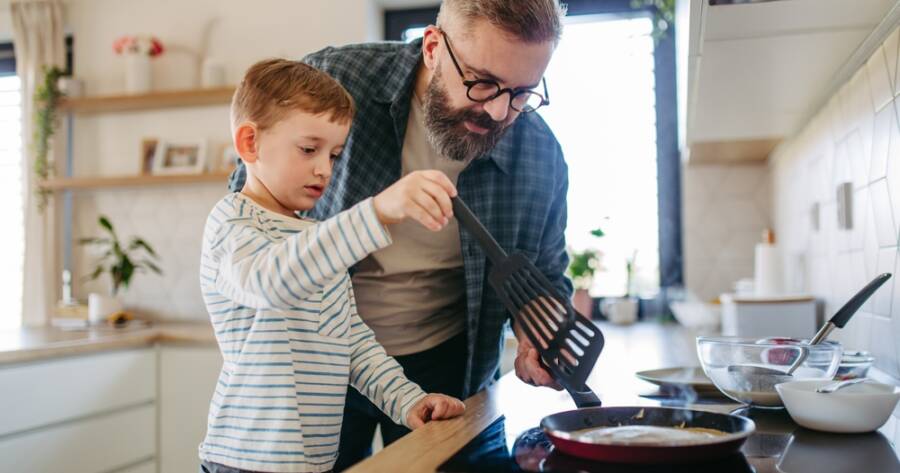Cooking at home brings joy, creativity, and comfort—but the kitchen can also be one of the most accident-prone areas in the house. From sharp knives to hot surfaces, small mistakes can lead to big problems. Fortunately, most accidents are preventable with a few simple precautions. Building safe habits not only keeps you protected but also makes cooking smoother and more enjoyable. With the right awareness and preparation, your kitchen becomes a place for confidence.
Keep Knives Sharp and Use Them Safely
It may sound counterintuitive, but dull knives cause more injuries than sharp ones. A blade that’s too blunt requires extra force, making it easier to slip. Keep knives sharp and use a sturdy cutting board with a damp towel underneath to prevent slipping. Always cut away from your body and keep your fingers tucked in using the “claw grip” technique.
When washing knives, never leave them submerged in soapy water where they can’t be seen. Clean them immediately after use and store them in a block or magnetic strip—never loose in a drawer. Respecting knife safety not only protects your hands but also keeps meal prep efficient and precise.
Prevent Burns and Handle Heat Wisely
Heat is unavoidable in cooking, but most burns can be prevented with mindfulness. Always turn pot handles inward to avoid knocking them over, and use dry oven mitts—wet fabric transfers heat instantly. When lifting lids from pots, tilt them away from your face to release steam safely. Keep a lid or baking sheet nearby when cooking with oil to smother potential flare-ups.
Avoid wearing loose sleeves or dangling jewelry while cooking on the stove, as they can easily catch fire. Also, never leave the kitchen unattended while frying, grilling, or broiling food. Staying present and cautious helps prevent one of the most common causes of household fires.
Store and Handle Food Properly
Safe cooking starts long before the stove turns on. Raw meat, poultry, and seafood should be stored on the bottom shelf of the refrigerator to prevent juices from dripping onto other foods. Keep your fridge at or below 40°F (4°C) and your freezer at 0°F (-18°C). Always wash hands, cutting boards, and utensils after contact with raw ingredients to avoid cross-contamination.
Use separate cutting boards for raw meat and produce whenever possible. Thaw frozen foods in the refrigerator—not on the counter—to prevent bacterial growth. Proper food storage and handling aren’t just about avoiding illness; they preserve freshness and flavor, making every meal safer and more satisfying.
Clean Up Spills and Clutter Quickly
A clean kitchen is a safe kitchen. Spills are among the top causes of household injuries, especially in high-traffic cooking spaces. Wipe up liquids or dropped ingredients immediately to prevent slips and falls. Keep floors clear of cords, grocery bags, or stools that could create tripping hazards.
Maintaining a tidy workspace also reduces stress and improves focus. Clear counters of unnecessary items before you begin cooking, and store tools where they’re easy to reach. A clutter-free environment minimizes distractions and mistakes, allowing you to cook with better rhythm and awareness. Safety and organization go hand in hand in every great kitchen.
Be Prepared for Emergencies
Even with precautions, accidents can happen. Keep a small fire extinguisher rated for grease and electrical fires within easy reach—but never use water on an oil fire. Make sure everyone in your home knows where it is and how to use it. Store first-aid supplies nearby for minor cuts or burns, and know basic wound care procedures.
Ensure smoke detectors are working and test them monthly. For gas stoves, check for leaks by ensuring burners ignite cleanly and there’s no lingering odor of gas. Awareness and preparation mean you can act quickly and calmly when needed—turning potential disasters into manageable moments.
Safety as the Secret Ingredient
Confidence in the kitchen starts with safety. Every small precaution—from wiping up spills to sharpening knives—builds trust in your abilities and ensures a smoother, more enjoyable cooking experience. Safe kitchens aren’t sterile or rigid; they’re efficient, creative spaces where care and awareness make room for joy. When you treat safety as part of every recipe, you protect not just your home—but your love for cooking itself.

